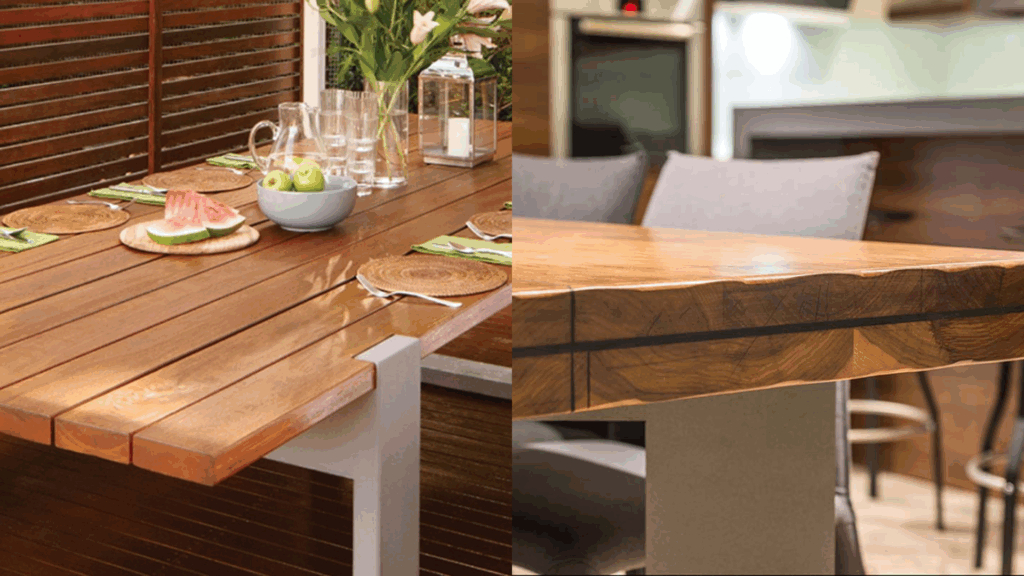If you’re trying to choose between hardwood and softwood for your next project, you’re not alone.
I’ve faced the same decision many times, whether I was building furniture, working on floors, or planning something for outdoors like a deck.
These two types of wood are used in all kinds of projects, but what really makes them different?
And how do you know which one is right for your needs? The answer isn’t just about how hard the wood feels.
It also depends on where the wood comes from, how it looks, how durable it is, and how much it costs.
In this blog, I’ll break down the key differences between hardwood and softwood in a simple, easy-to-understand way.
Whether you’re a DIYer, a homeowner, or just curious about wood, I hope this guide helps you make a smart and confident choice.
Let’s take a closer look at hardwood vs softwood and see which one fits your project best
Understanding Hardwood and Softwood
When you’re starting a DIY project or picking out wood for your home, you might hear the terms “hardwood” and “softwood.”
You might think hardwood is always hard and softwood is always soft, but that’s not always true! It’s actually about the type of tree the wood comes from.
Hardwood comes from deciduous trees that lose their leaves in the fall. Hardwood is usually dense and strong, which makes it great for furniture, flooring, and cabinets.
It can be a little harder to cut or shape, but it lasts a long time and looks really nice.
Softwood comes from trees that stay green all year round (coniferous trees). Softwood is usually lighter and easier to work with.
It’s often used in construction, like for framing walls or making outdoor fences. Softwood is also more common, so it tends to be cheaper than hardwood.
So, the big difference isn’t about how hard or soft the wood is, it’s about the kind of tree it comes from.
Both have their own uses, and knowing the difference can help you pick the right one for your next project.
Key Differences: Hardwood vs Softwood
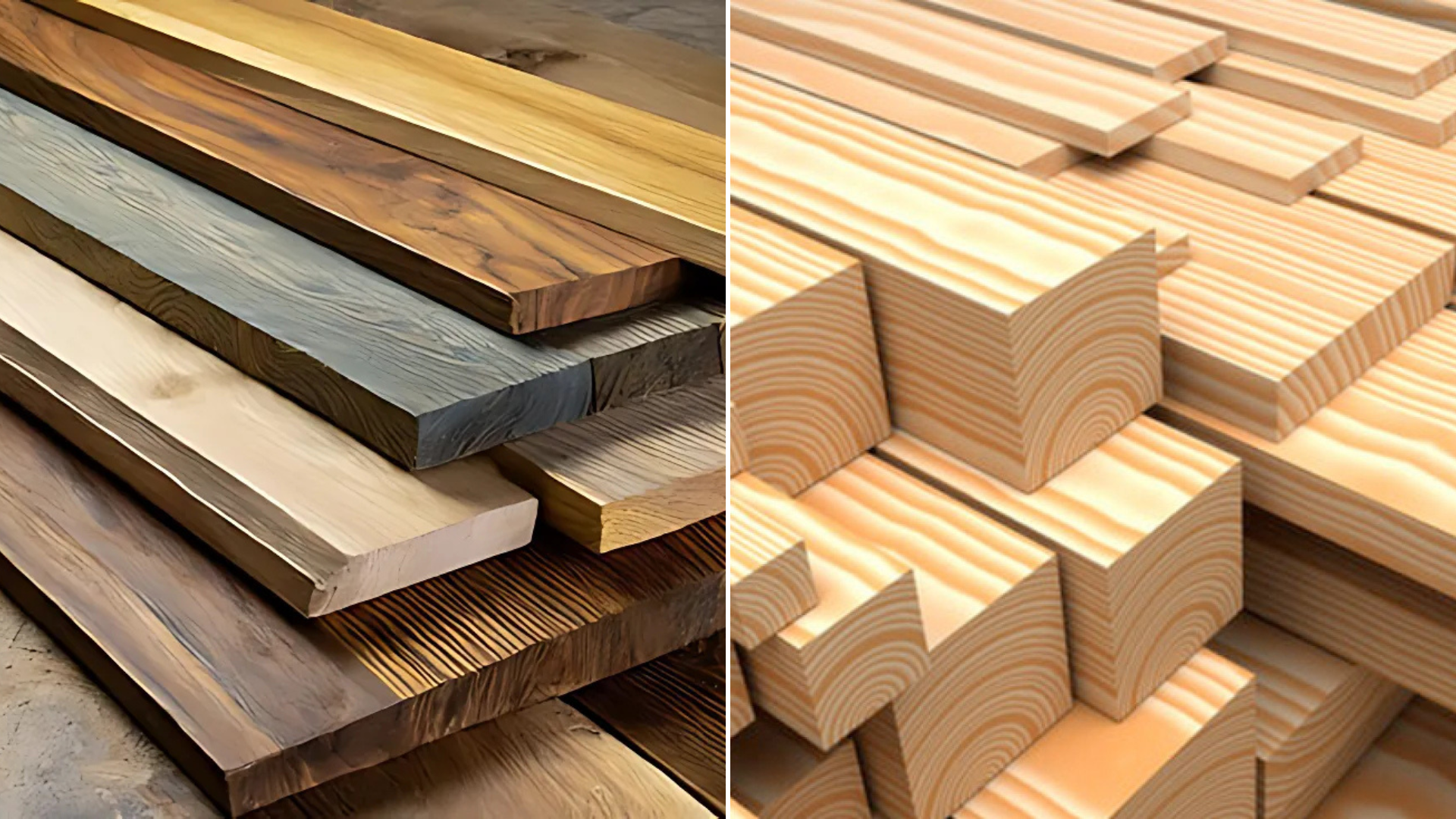
If you’re wondering how hardwood and softwood are different, you’re not alone. Many people think it’s just about how tough the wood feels.
But the real differences are all about the trees, how the wood looks, how strong it is, and how it’s used.
| Feature | Hardwood | Softwood |
|---|---|---|
| Tree Type | From trees that lose leaves | From evergreen trees |
| Growth Speed | Slower-growing | Faster-growing |
| Wood Density | Usually denser and heavier | Usually lighter and softer |
| Workability | Harder to cut or shape | Easier to cut and shape |
| Cost | Often more expensive | Usually more affordable |
| Common Uses | Furniture, floors, cabinets | Construction, framing, fences |
| Grain Pattern | Often rich and detailed | Usually simple and straight |
As you can see, hardwood and softwood each have their own strengths. Hardwood is great for strong, long-lasting pieces like furniture and floors.
Softwood is perfect when you need something easy to work with and more budget-friendly.
Knowing these key traits can help you make the right choice for whatever project you’re planning.
Pros and Cons of Hardwood and Softwood
When choosing between hardwood and softwood, it helps to know the good and not-so-good things about each one.
Both types of wood can be great, and it just depends on what you need for your project.
Hardwood
Pros:
- Very strong and long-lasting: Great for floors, furniture, and anything that gets lots of use.
- Looks beautiful: Hardwood usually has rich grain patterns that give it a high-end look.
- Resists dents and scratches: Because it’s denser, it can handle more wear and tear.
Cons:
- More expensive: Hardwood costs more than softwood in most cases.
- Harder to work with: It’s tougher to cut, sand, and nail.
- Grows slower: This can make it less environmentally friendly unless it’s from a sustainable source.
Softwood
Pros:
- More affordable: Softwood is usually cheaper and easier to find.
- Easier to cut and shape: Great for DIY beginners or quick projects.
- Grows faster: That makes it a better choice for the environment when it comes from well-managed forests.
Cons:
- Not as strong: It can dent or scratch more easily.
- Less fancy appearance: The grain is simpler and may not look as rich as hardwood.
- Needs more care outside: Some softwoods don’t hold up well to moisture unless treated.
Hardwood is strong, stylish, and long-lasting, but it’s more expensive and harder to work with.
Softwood is cheaper, easier to handle, and grows faster, but it’s not as tough. Think about what matters most for your project: cost, look, or strength, and choose the one that fits best!
Common Species of Hardwood and Softwood
There are many different kinds of hardwood and softwood, each with its own look and purpose.
Some are better for building, while others are perfect for making furniture or home decor.
Popular Hardwood Species
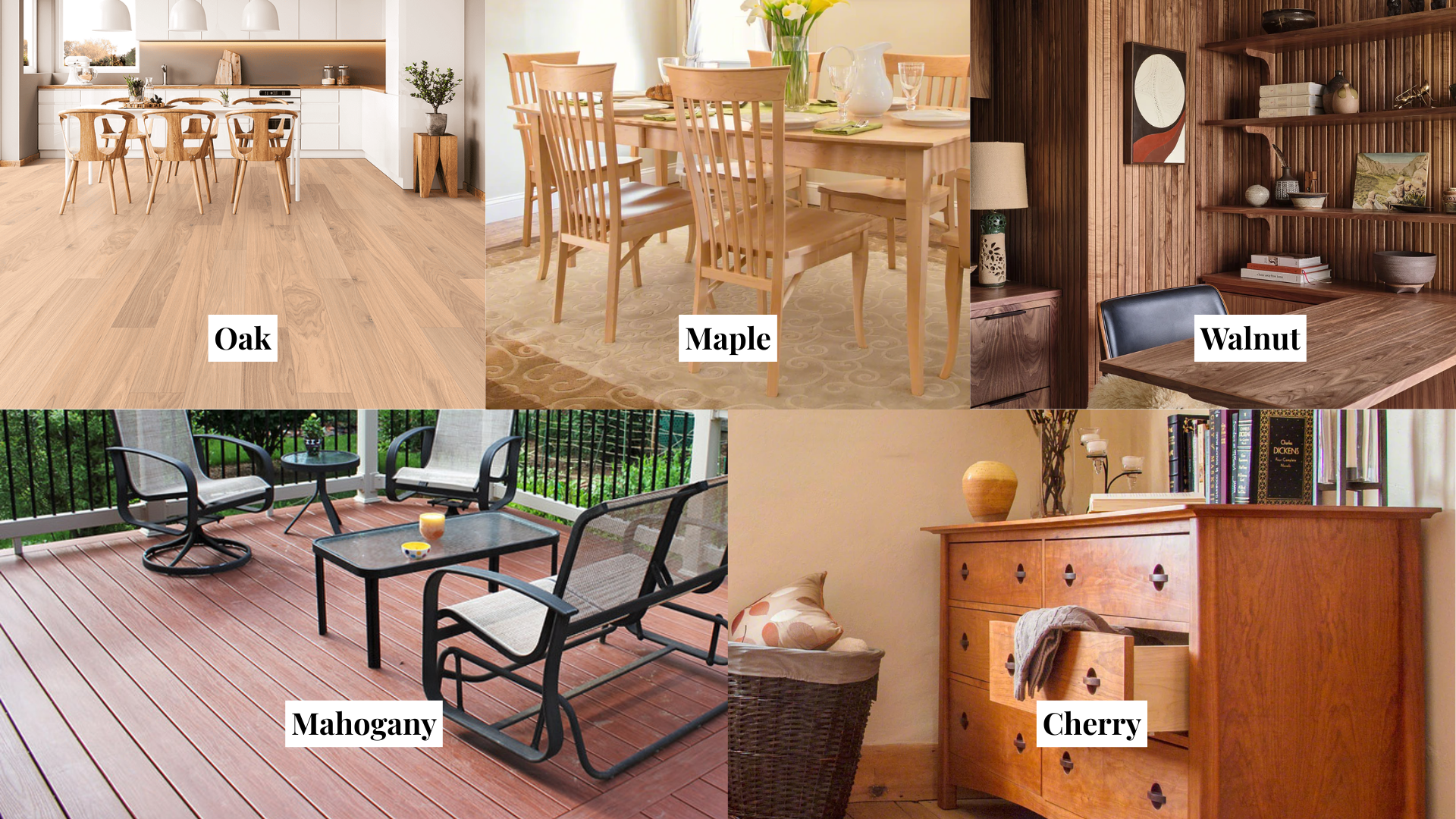
- Oak: Oak is one of the most popular hardwoods. It’s strong, heavy, and has a beautiful grain. People often use oak for flooring, tables, and cabinets.
- Maple: Maple is smooth and light-colored. It’s often used for kitchen furniture and cutting boards because it’s durable and easy to clean.
- Walnut: Walnut has a dark, rich color and is known for its beauty. It’s a favorite for high-end furniture and decorative woodwork.
- Mahogany: Mahogany is a classic hardwood with a reddish-brown color. It’s used in fine furniture and musical instruments.
- Cherry: Cherry wood has a warm tone that darkens over time. It’s often used for furniture and cabinets.
Popular Softwood Species
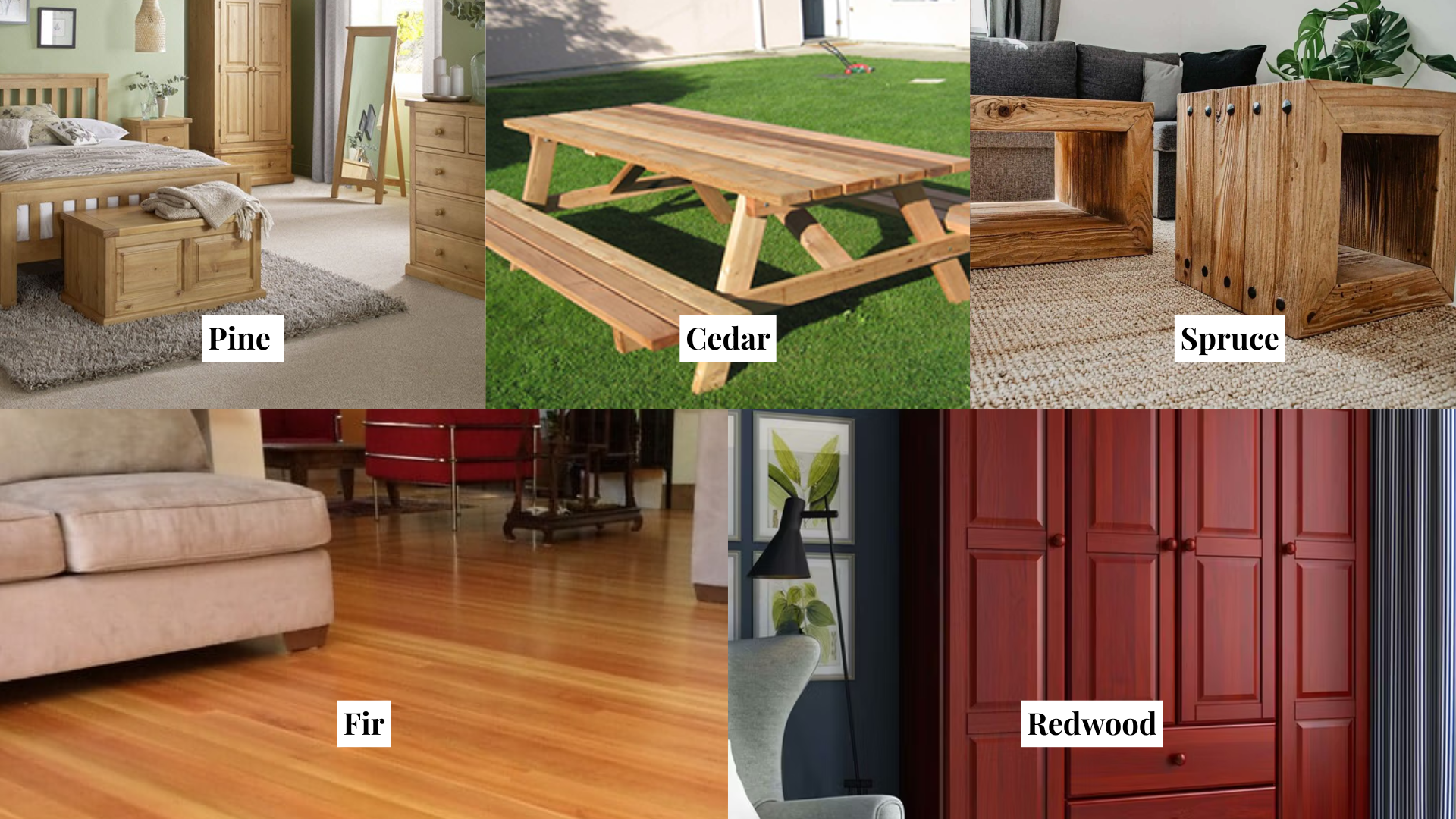
- Pine: Pine is light and easy to work with. It’s often used for shelves, paneling, and simple furniture. It also has a sweet smell!
- Cedar: Cedar is known for its fresh scent and natural resistance to bugs. It’s perfect for closets, chests, and outdoor furniture.
- Spruce: Spruce is light and commonly used for framing houses or making musical instruments like guitars and violins.
- Fir: Fir has a straight grain and is often used in construction, especially for beams and doors.
- Redwood: Redwood is beautiful and weather-resistant, which makes it great for outdoor decks and garden furniture.
There’s no one-size-fits-all when it comes to wood. Each type, whether it’s a hardwood like oak or a softwood like pine, has its own strengths.
Once you know what the wood is best for, it’s much easier to choose the right one for your project!
Choosing Between Hardwood and Softwood for Your Project
When I’m picking between hardwood and softwood, it’s not just about guessing what feels stronger.
It’s about matching the right type of wood to what my project really needs.
I’ve found that some jobs benefit from the extra strength and durability of hardwood, while others are easier and more budget-friendly when I go with softwood.
For Furniture That Gets Daily Use: Go Hardwood
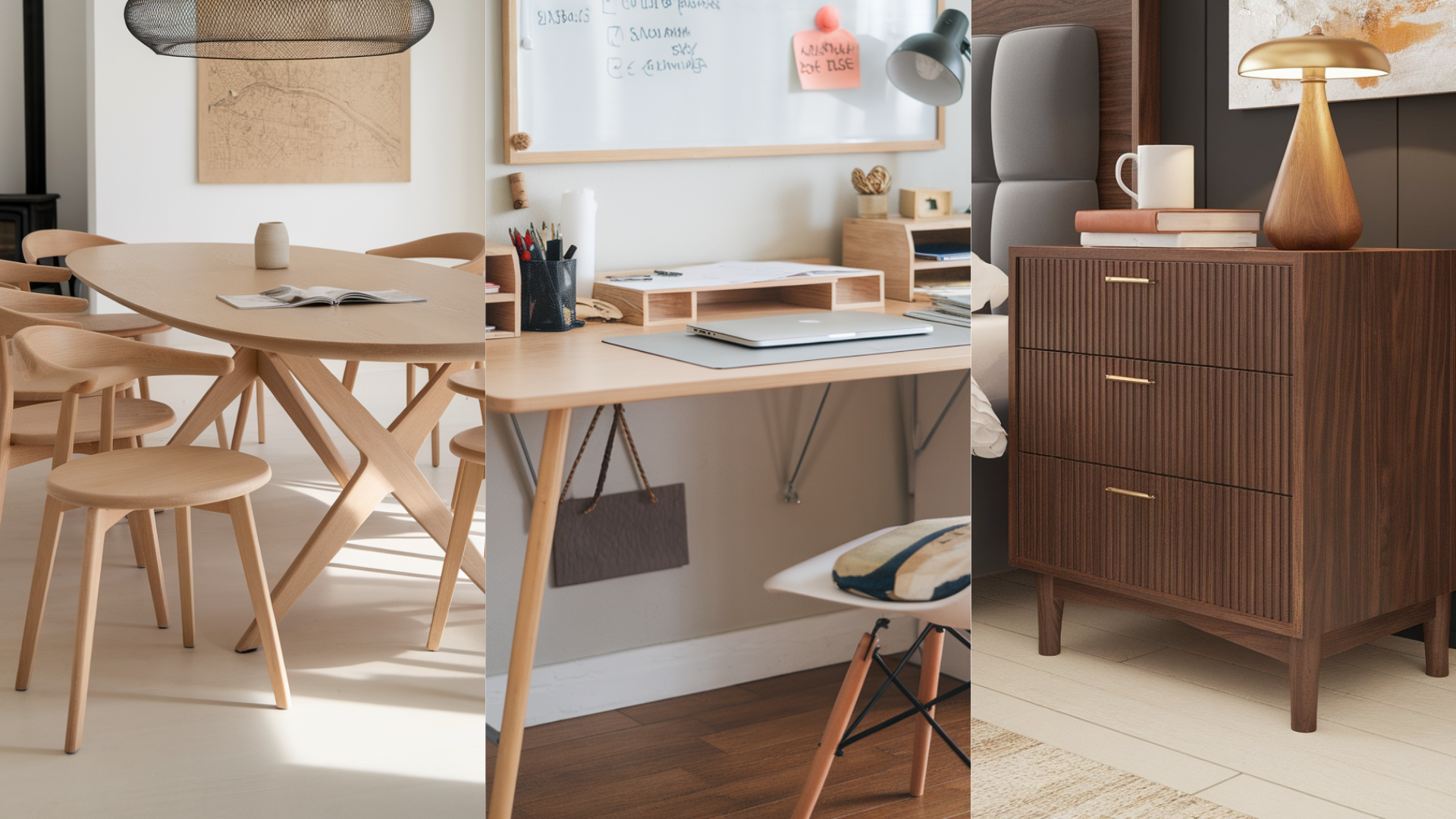
Are you building a dining table, a desk, or kitchen chairs that will get used every single day? If so, hardwood like oak, maple, or walnut is your best friend.
These woods are strong enough to withstand years of wear and tear. They’re also more dent-resistant, which helps when kids, pets, or heavy dishes are involved.
For example:
- Dining tables made of oak won’t sag in the middle over time.
- Maple desks can handle heavy books or computer monitors without scratches.
- Walnut nightstands give a deep, rich color that lasts for decades.
For Quick DIY Shelves or Storage: Choose Softwood
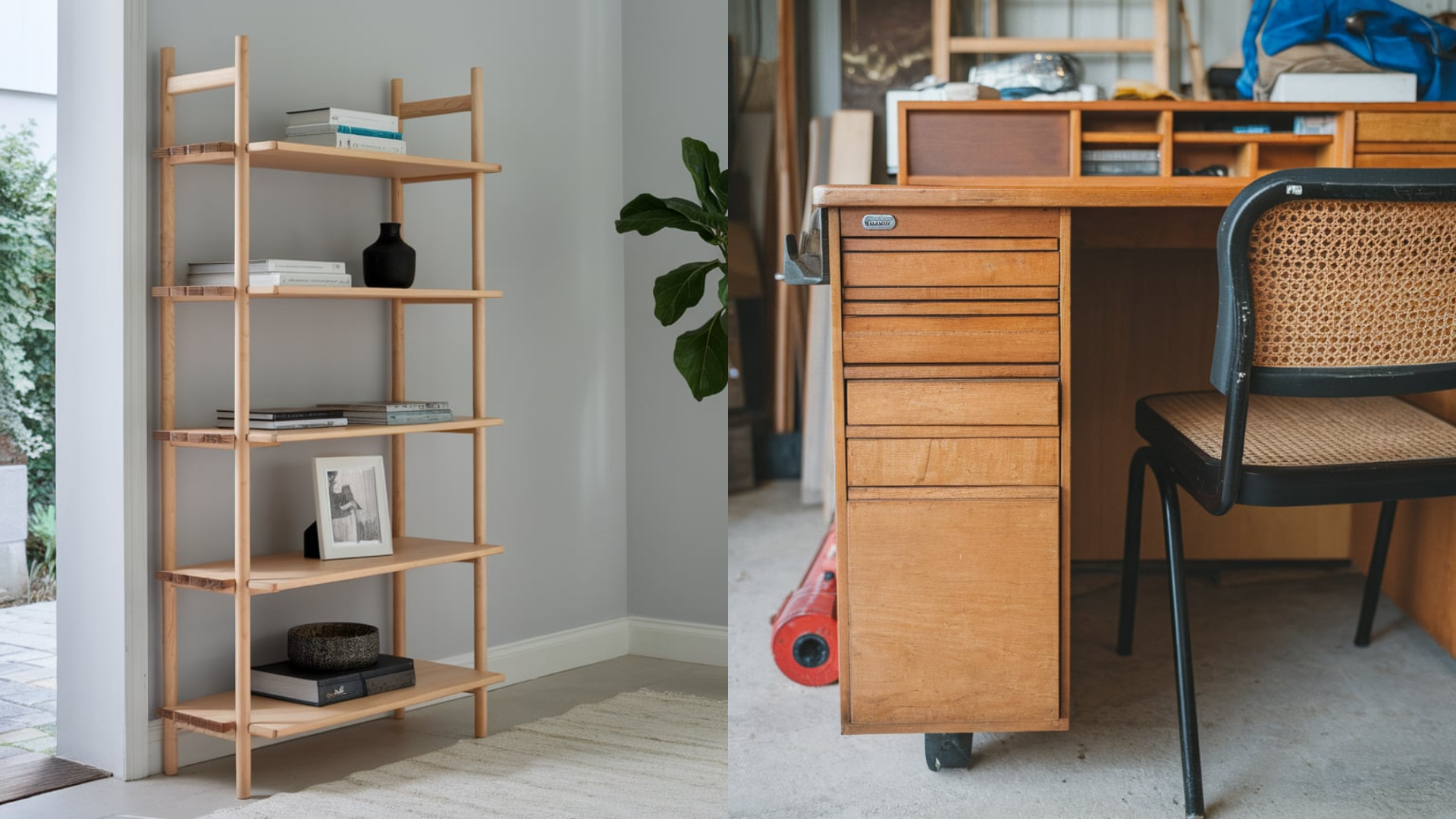
If you’re just putting together a few wall shelves or a small bookcase, pine or spruce is a great pick. It’s much easier to cut and nail, so it’s perfect if you’re using basic tools at home.
Plus, it’s lightweight, which makes it easier to hang on walls or move around.
Here’s when softwood shines:
- Building a garage workbench that doesn’t need to be fancy.
- Putting together storage crates or wooden bins.
- Making wall-mounted shelves that won’t hold super heavy items.
For Outdoor Projects: It Depends
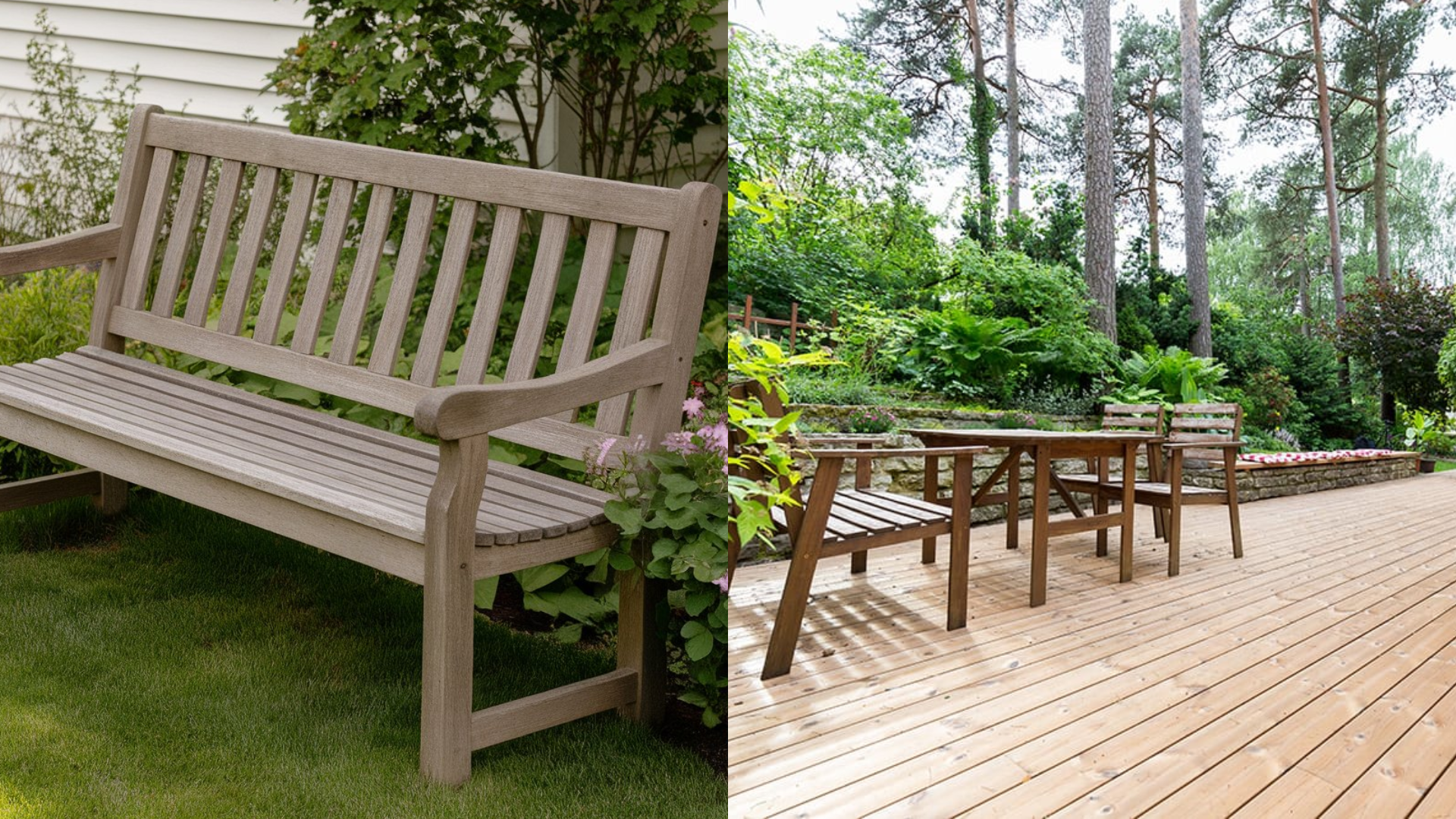
Working outside? You have to be careful with your wood choice. Regular hardwoods like maple can rot if exposed to rain.
But cedar, redwood, and pressure-treated softwood are built for the outdoors.
Examples:
- Use cedar for a garden bench or a planter box. It smells good and keeps bugs away naturally.
- Build a fence or deck with treated pine, which resists moisture and doesn’t cost a fortune.
- Avoid hardwoods like cherry or walnut outdoors unless you plan to seal them very well.
For Floors and Stairs: Hardwood Is Worth It
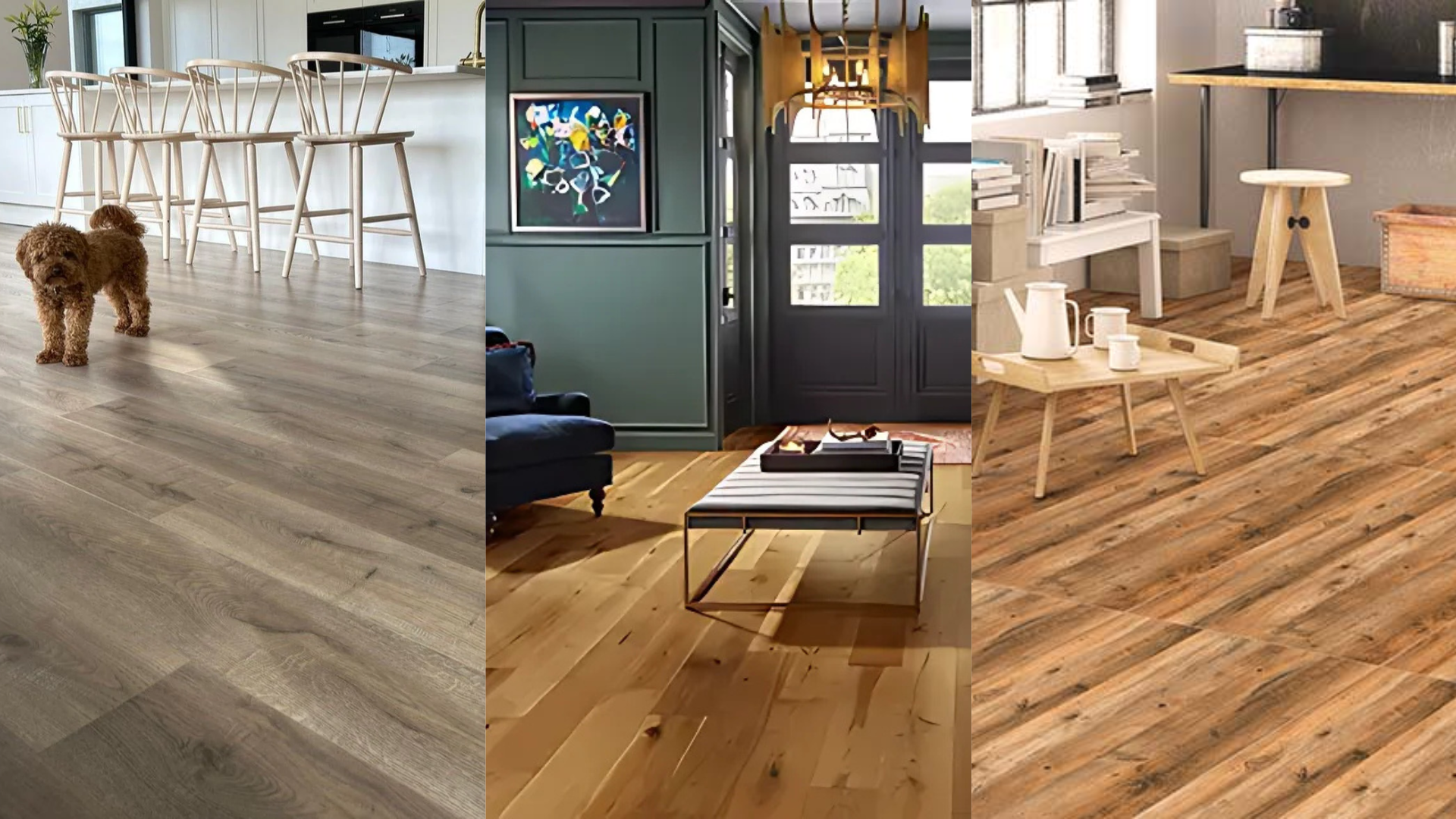
If you’re redoing your floors or stairs, don’t go cheap. Softwood scratches too easily and dents under heavy weight.
Hardwood flooring, like oak or hickory, holds up better to foot traffic, furniture, and dropped toys or tools.
Real-life advice:
- Hardwood stairs don’t get worn down in the middle like softwood ones do.
- Pets’ claws will leave fewer marks on hardwood flooring.
- If your family wears shoes in the house, hardwood is a better option.
For Decorative Projects or Crafts: Go Softwood
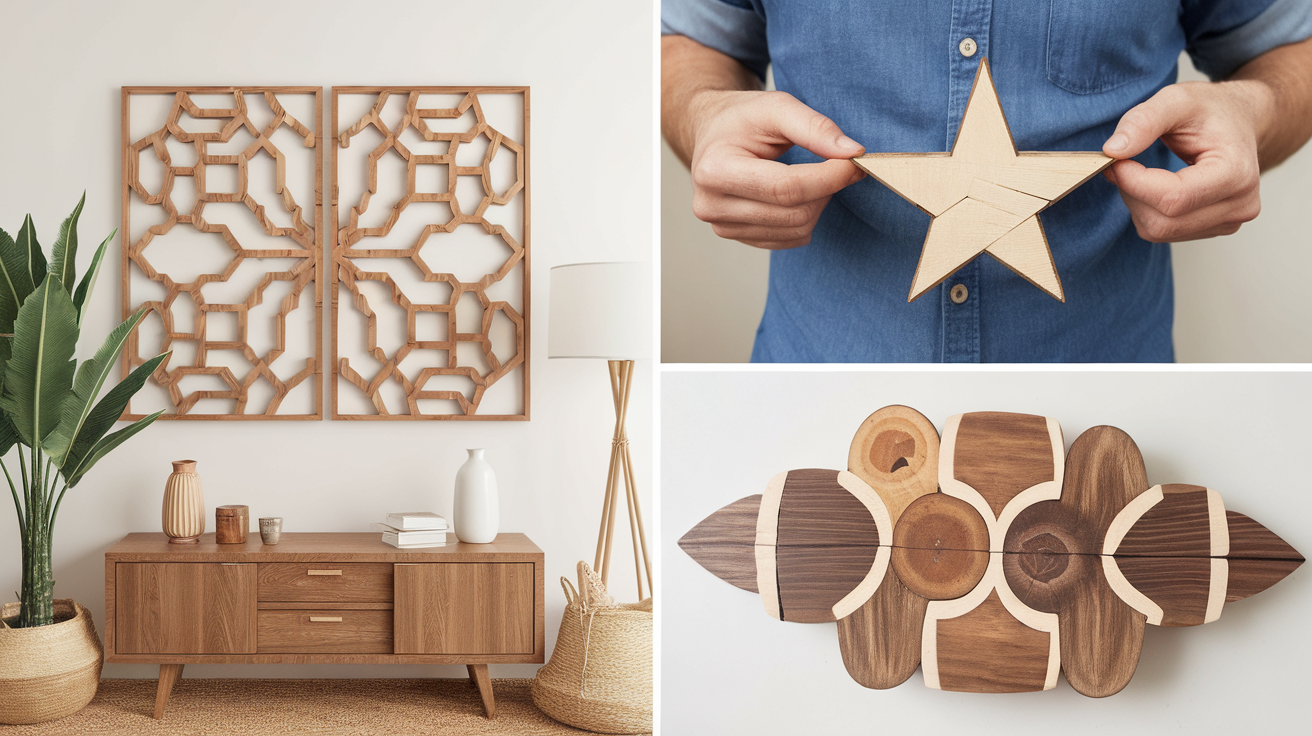
Making a DIY sign, a wall-mounted coat rack, or a rustic headboard? Softwoods are great for these.
Pine and fir are easy to sand and take paint well. They also give that light, country-style look that’s very popular in farmhouse or shabby chic designs.
Softwood is more forgiving. If you make a small mistake while cutting or drilling, you can fix it more easily than with dense hardwood.
Which is Better?
Instead of asking “Which is better – hardwood or softwood?” ask “What is this wood going to do?”
- Choose hardwood for its strength, long-term use, and lasting beauty, such as in furniture, stairs, or floors.
- Choose softwood when you need something easy to work with, lighter in weight, or budget-friendly, like for shelves, signs, or backyard builds.
Every type of wood has its place. The trick is using the right one at the right time.
Can You Mix Hardwood and Softwood?
Mixing hardwood and softwood in the same project can work really well if you do it thoughtfully.
Many people use hardwood for the parts that need to be strong and last a long time, like table tops, chair legs, or cabinet doors, while using softwood for hidden parts or areas that don’t take much wear, like drawer bottoms or frames.
This helps keep the cost down without losing strength or quality where it counts.
Just make sure both types of wood are properly sealed or finished so they look good together and don’t react differently to moisture or temperature changes.
With a little planning, mixing the two can give you the best of both worlds.
Conclusion
Choosing between hardwood and softwood doesn’t have to be confusing. It really comes down to what you need for your project.
Hardwood is strong and long-lasting, great for furniture, floors, or anything that takes a lot of use.
Softwood is lighter, easier to work with, and better for simple builds, crafts, or large outdoor projects.
Both types of wood have their own strengths, and sometimes, mixing them makes the most sense.
Whether you’re building a table, a shelf, or a garden bench, thinking about cost, strength, and looks will help you decide what’s best.
Remember, it’s not just about what’s “hard” or “soft”, it’s about what works for your space and your needs. Take your time, plan your project, and choose the wood that fits your vision.

